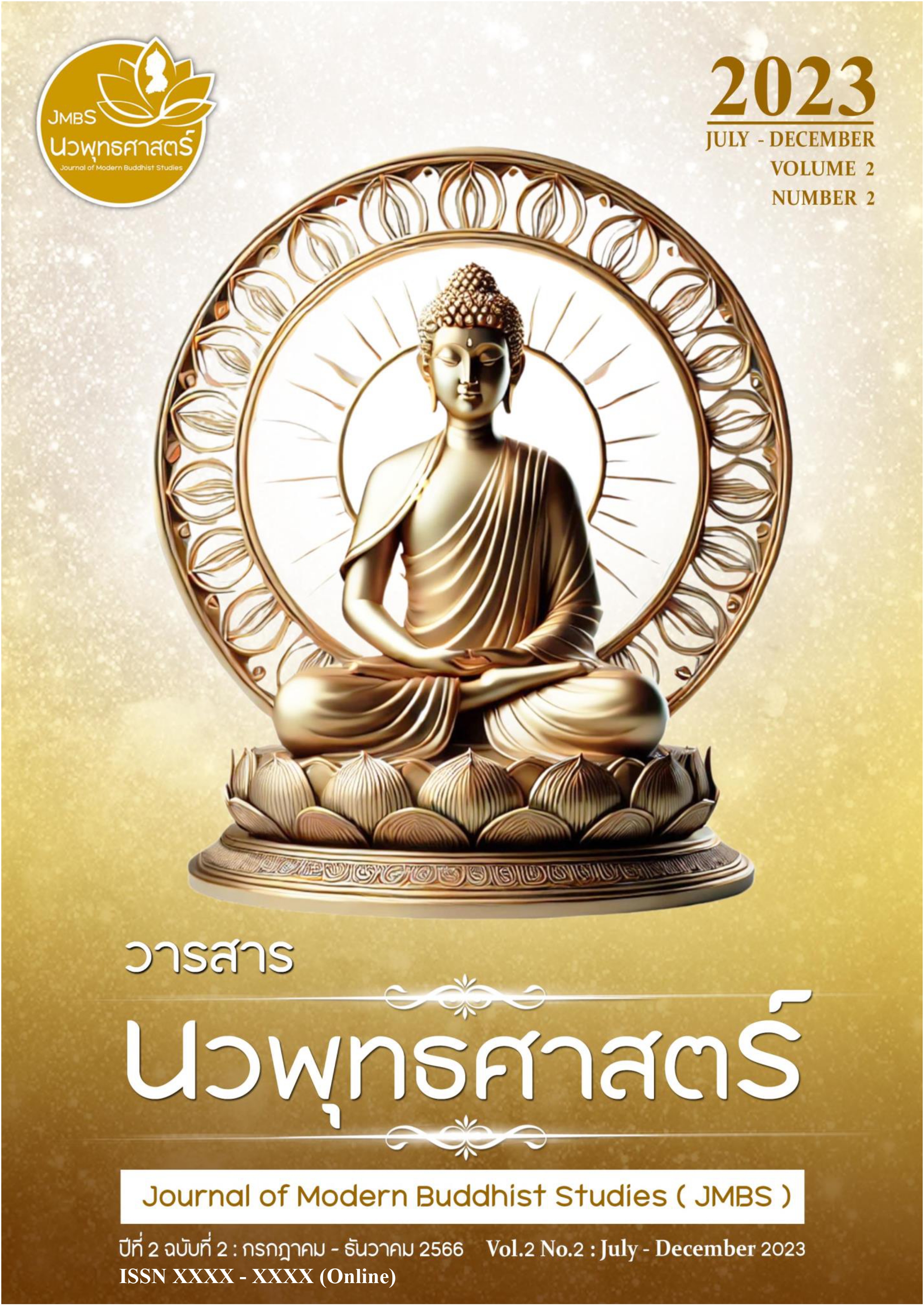AN ANALYSIS OF KAMMA IN THE VIMĀNAVATTHU FOR YOUTH IN ORGANIZING ACTIVITIES FOR TEACHING AND LEARNING
Keywords:
Vimanavatthu Scripture, Analysis of Karma, Karma in Teaching and LearningAbstract
The research titled “An Analysis of Karma in the Vimanavatthu Scripture for Youth in Organizing Learning Activities” aimed to: Study the concept of karma in the Vimanavatthu Scripture for youth in organizing learning activities. Analyze the pre- and post-activity outcomes in learning about karma in the Vimanavatthu Scripture for youth. The research utilized a mixed-methods approach, comprising Qualitative Research and Quantitative Research. Data were collected using pre- and post-assessment tools. Key Findings: 1.Study of Karma in the Vimanavatthu Scripture for Youth The study involved designing and developing a knowledge set through a process that included content categorization, defining objectives, data collection, creating the knowledge set, evaluation, and improvement before real-world testing. The learning process was tailored to meet the needs, aptitudes, and interests of the students, ensuring an engaging and relevant learning experience. 2. Pre- and Post-Activity Analysis Before the activity: Students demonstrated a moderate level of understanding of karma (x̄ = 2.95, 59.00%, S.D. = 0.68). After using the knowledge set: Students showed a significant improvement, with their understanding reaching a high level (x̄ = 4.10, 82.00%, S.D. = 0.88), reflecting an increase of 1.15 points or 23.00%. The results indicate the effectiveness of the developed knowledge set in enhancing students' understanding of karma. The knowledge set based on the Vimanavatthu Scripture effectively enriched students' understanding of karma and promoted better learning outcomes. By considering individual diversity and differences, the learning process fostered a more personalized and impactful educational experience.
References
กรมการศาสนา (2548). โครงการจัดตั้งพระสอนศีลธรรมในโรงเรียน. พิมพ์ครั้งที่ 4. กรุงเทพมหานคร : ด่านสุทธาการพิมพ์.
จินตนา สิทธิกุล (2566). ทฤษฎีการเรียนรู้และการประยุกต์สู่การสอน. สืบค้นข้อมูลจาก https://sites. google.com/site/hnwykarreiynru 123 /thvsdi-kar-reiyn-ru-laea-kar-prayukt-su-kar-sxn
ชูศรี วงศ์รัตนะ (2544). การวิจัยเพื่อการเรียนรู้. กรุงเทพมหานคร: ทิปพับลิเคชั่น.
พระครูวินัยธรสุเทพ อกิญจโน (2539). การศึกษาเริงวิเคราะห์เรื่องเทวดาในพระพุทธศาสนาเถรวาท. วิทยานิพนธ์พุทธศาสตรมหาบัณฑิต. บัณฑิตวิทยาลัย: มหาวิทยาลัยมหาจุฬาลงกรณราชวิทยาลัย.
พระครูสุธีปริยัตยาทร (2551). “การศึกษาสภาพปัญหาและแนวทางการแก้ปัญหา การจัดการเรียนการสอนวิชาพระพุทธศาสนา กลุ่มสาระการเรียนรู้สังคมศึกษา ศาสนาและวัฒนธรรมของพระสงฆ์ในสังกัดสำนักงานเขตพื้นที่การศึกษาสระบุรี เขต 1”. วิทยานิพนธ์ครุศาสตรมหาบัณฑิต สาขาวิชาหลักสูตรและการสอน. บัณฑิตวิทยาลัย : มหาวิทยาลัยราชภัฏเทพสตรี.
พระราชวรมุนี (2528). พจนานุกรรมพุทธศาสตร์ฉบับประมวลธรรม. พิมพ์ครั้งที่ 4. กรุงเทพมหานคร: ด่านสุทธาการพิมพ์.
เสนห์ สีกาวี และบรรจบ บรรณรุจิ (2560). พัฒนากระบวนการเรียนรู้เชิงพุทธบูรณาการ. “วารสารสันติศึกษาปริทรรศน์ฯ” 4(1) (มกราคม-เมษายน): 278.
Stories of the Mansions (1993). tr.I B.Horner. Oxford: PTS.
Yamane, Taro (1967). Statistics: An Introductory Analysis, and Edition. New York: Harper and Row.

Additional Files
Published
How to Cite
Issue
Section
License

This work is licensed under a Creative Commons Attribution-NonCommercial-NoDerivatives 4.0 International License.





